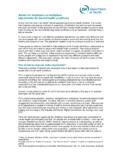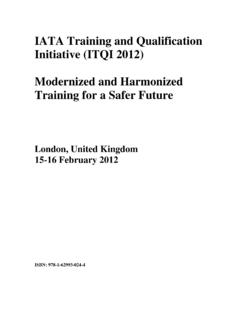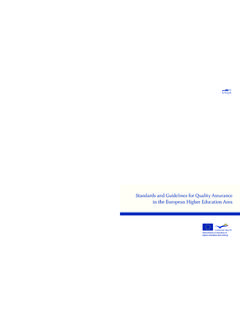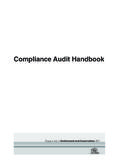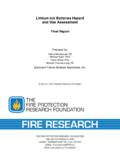Transcription of Physical and - NHS Health at Work
1 Further copies of these guidelines are available from NHS Plus:Email: 978-1-86016-353-1 Physical and shift work inpregnancyOccupational aspects of managementAnationalguidelineFurther copies of these guidelines are available from NHS Plus:Email: 978-1-86016-331-9 NHS PlusEmail: Health Clinical Effectiveness UnitRoyal College of Physicians of London11 St Andrews Place, Regent s Park, London NW1 by:The Faculty of Occupational Medicineof the Royal College of Physicians6 St Andrews Place, Regent s Park, London NW1 aanndd sshhiifftt wwoorrkk iinnpprreeggnnaannccyyOccupational aspects ofmanagementA national guideline2009 AcknowledgementsWe are indebted to the research librarians, Lesley Vickers and SusanPaterson, for undertaking the literature searches and for retrieving thepapers.
2 We would also like to thank Barbara Smiley for heradministrative support towards the end of the project. NHS PlusThe NHS Plus Project aims to improve the quality and delivery ofoccupational Health services to NHS staff and in turn increase theavailability of NHS Plus services to small and medium employers. Inaddition to commissioning the Occupational Health ClinicalEffectiveness Unit to produce evidence-based guidelines and conductnational audits, the Project has work strands to improve the delivery ofservices, provide an improved trading model and improve the strategicleadership of occupational Health services in the Royal College of PhysiciansThe Royal College of Physicians plays a leading role in the delivery ofhigh-quality patient care by setting standards of medical practice andpromoting clinical excellence.
3 We provide physicians in the UnitedKingdom and overseas with education, training and supportthroughout their careers. As an independent body representing over20,000 Fellows and Members worldwide, we advise and work withgovernment, the public, patients and other professions to improvehealth and Health Clinical Effectiveness UnitThe Occupational Health Clinical Effectiveness Unit at the Royal Collegeof Physicians aims to measure and raise standards, and to reducevariability, of occupational healthcare through the development ofevidence-based guidelines and conduct of national clinical of Occupational MedicineOur aim is for healthy working lives through.
4 Elimination of preventable injury and illness caused or aggravated by work maximising people s opportunities to benefit from healthy and rewarding work while not putting themselves or others at unreasonable risk access for everyone to advice from a competent occupational physician as part of comprehensive occupational Health and safety services. Citation for this documentNHS Plus, Royal College of Physicians,Faculty of Occupational Medicine. Physicaland shift work in pregnancy: occupationalaspects of management. A nationalguideline. London: RCP, rights reserved. No part of thispublication may be reproduced in anyform (including photocopying or storing itin any medium by electronic means andwhether or not transiently or incidentallyto some other use of this publication)without the written permission of thecopyright owner.
5 Applications for thecopyright owner s written permission toreproduce any part of this publicationshould be addressed to the 2009 Royal College of Physicians ISBN 978-1-86016-353-1 Review date: 2014 Royal College of Physicians of London11 St Andrews Place, London NW1 Charity No 210508 Cover design: WLG DesignTypeset by Dan-Set Graphics, Telford, ShropshirePrinted by The Lavenham Press Ltd,Sudbury, Suffolk Royal College of Physicians, 2009. All rights Development Group vExecutive summaryviiGlossaryix1 Introduction1 Aim1 Background1 Epidemiology of adverse pregnancy outcomes2 Possible biological mechanisms4 Evidence of variation in practice.
6 Relevance to occupational medicine52 Methodology of the evidence review7 Key questions7 Literature search8 Critical appraisal11 Assessing the evidence11 Development of recommendations12 Limitations of the evidence base123 Findings and recommendations15 Synthesis of the evidence and recommendations151 Manual handling, lifting, heavy Physical work15(a) Heavy Physical effort15 Recommendations16(b) Lifting17 Recommendations182 Prolonged standing18 Recommendations193 Working hours20 Recommendations214 Shift work215 Fatigue score224 Future research23 Recommendations for research235 Audit criteria24 Evidence tables1 Summary of papers included as evidence252 Preterm birth/threatened preterm labour283 Spontaneous miscarriage/perinatal mortality374 Low birth weight435 Pre-eclampsia476 Small for gestational age/intra-uterine growth restriction497 Sick leave/sick certification51 Appendices1 Search strategy542 Critical appraisal form563 SIGN grading584 grading system for recommendations595
7 Score per paper60 References79iv Royal College of Physicians, 2009. All rights and shift work in pregnancy: occupational aspects of management Royal College of Physicians, 2009. All rights Development GroupA multidisciplinary Guideline Development Group (GDG) was established at the outset of theproject. Each member brought their own expertise, and both a personal and a professionalperspective. The group included obstetric and midwifery clinicians, occupational healthpractitioners and human resources LeaderDr Nadia Sheikh, Specialist Registrar in Occupational Medicine, Royal Free Hampstead NHS Trust, LondonGuideline EditorDr Julia Smedley, Lead Consultant and Head of Occupational Health , Southampton University Hospitals NHS TrustDirector of evidence-based guideline project, NHS Plus Dr Ira Madan, Consultant and Senior Lecturer in Occupational Medicine, Guys and St Thomas NHS Foundation Trust and King s College LondonExternal assessors Professor Keith Palmer.
8 Professor of Occupational Medicine, Medical Research CouncilProfessor Khalid S Khan, Professor of Obstetrics-Gynaecology and Clinical Epidemiology, Birmingham Women s HospitalDr Susan Bewley, Consultant Obstetrician, Guy s and St Thomas NHS Foundation TrustGuideline Development Group Members Dr Paul Grime, Director of Occupational Health , Royal Free Hampstead NHS TrustDr Laila Kapadia, Occupational Health Physician, St Georges Healthcare NHS TrustMs Amanda Mansfield, Consultant Midwife, Royal Free Hampstead NHS TrustMs Sharon O Byrne, Assistant Director of Human Resources, Royal Free Hampstead NHS TrustMs Chris Perry, Domestic Services Manager, Royal Free Hampstead NHS TrustMs Lesley Purdie, Senior Back Care Advisor, HCA InternationalMiss Elaine Scott, Consultant Obstretician, Royal Free Hampstead NHS TrustMs Maggi Smith, Senior Occupational Health Nurse, Royal Free Hampstead NHS TrustConflicts of interest: none declared.
9 Royal College of Physicians, 2009. All rights summaryThe purpose of these guidelines is to enable consistent evidence-based advice to be given inrelation to pregnant women who are exposed to hazards at work. The guidance is intended foruse by Health professionals who are advising working women and their employers. Thedocument is focused on a number of specific hazards, namely lifting/manual handling andheavy Physical work, prolonged standing, long working hours and shift work (including nightshifts). The evidence considered applies to women who are well during their pregnancy; thosewith pregnancy-related complications need to be considered on an individual production of this full guideline and the accompanying short guidance documents foremployers, employees and Health professionals was overseen by a steering committee, theGuideline Development Group (GDG).
10 The GDG provided multidisciplinary, practitioner-based input both to the process and the emerging messages for practice, and aimed to reduceauthor bias. The GDG agreed the scope of the guideline in advance, including the key questions to beaddressed. Subsequently a literature search, based upon the key questions, was undertaken bytwo librarians at the Department of Health . This yielded 270 abstracts, from which selectedpapers were retrieved according to pre-determined inclusion criteria. Thirty-seven relevantpapers met the inclusion criteria and were critically appraised by members of the paper was appraised using the Scottish Intercollegiate Guidelines Network (SIGN)system.
